Students save offcuts from landfill to produce a truly sustainable fashion range
Date 1.11.2019
1.11.2019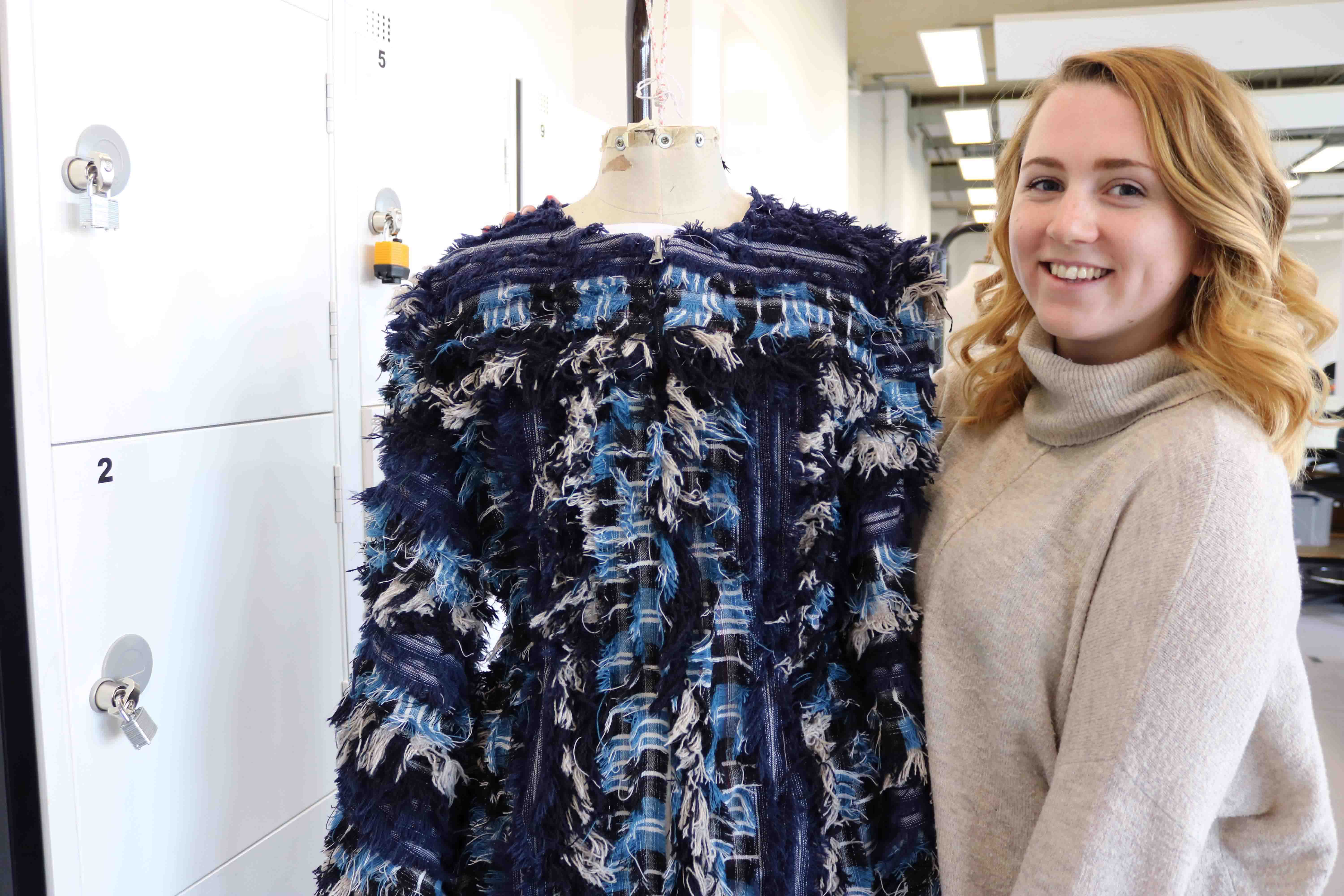
Fashion students at the University of Northampton have created a line of clothing that’s made entirely from fabric offcuts that were destined for landfill.
Lochcarron of Scotland, which manufacturers Scottish tartan, donated 150kg of selvedge (the self-finished edge of fabric) offcuts to final year students on the University’s Fashion, Textiles for Fashion and Footwear & Accessories courses.
The undergraduates were then challenged to design and make pieces using the waste material, and they came up with some stunning results, including gloves, jackets, waistcoats, headwear, jumpsuits and dresses – see the photos below.
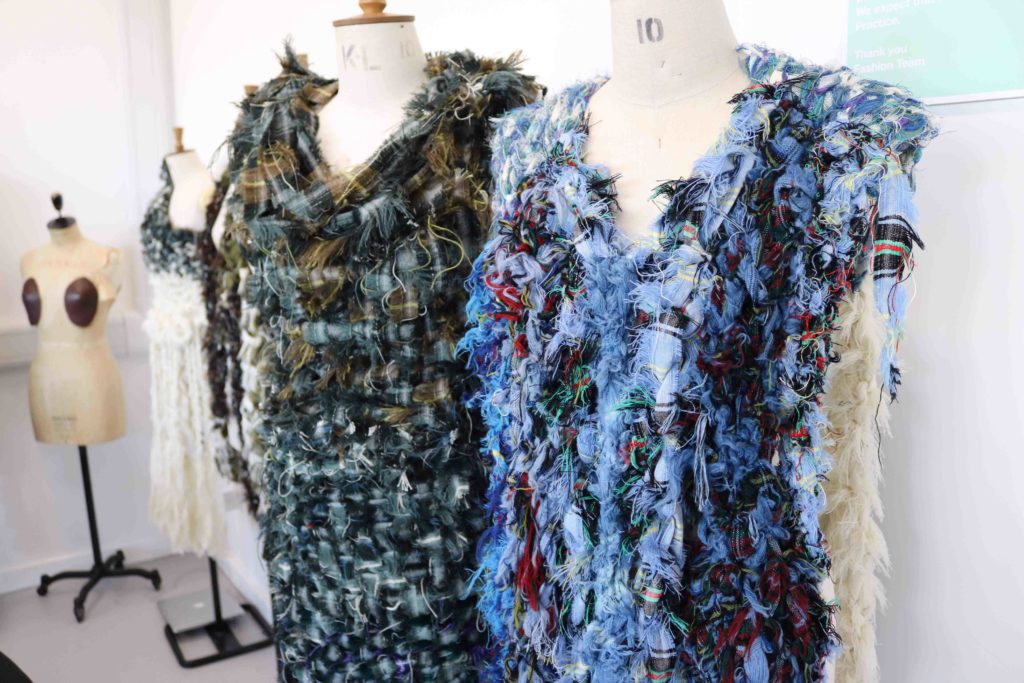
Two sustainable student creations.
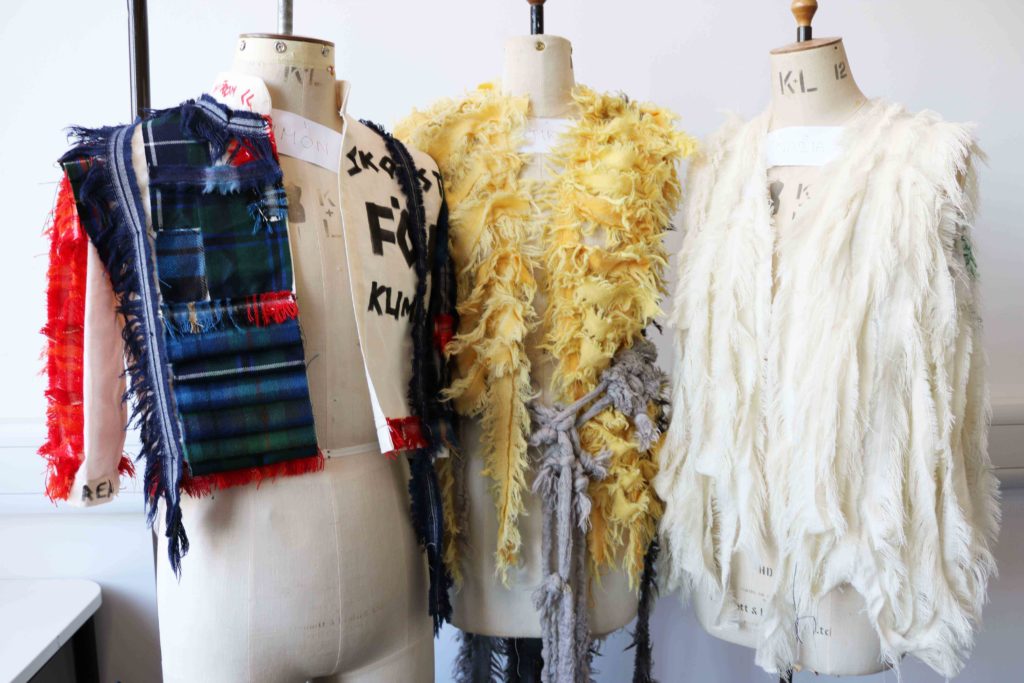
Waistcoats not waste.
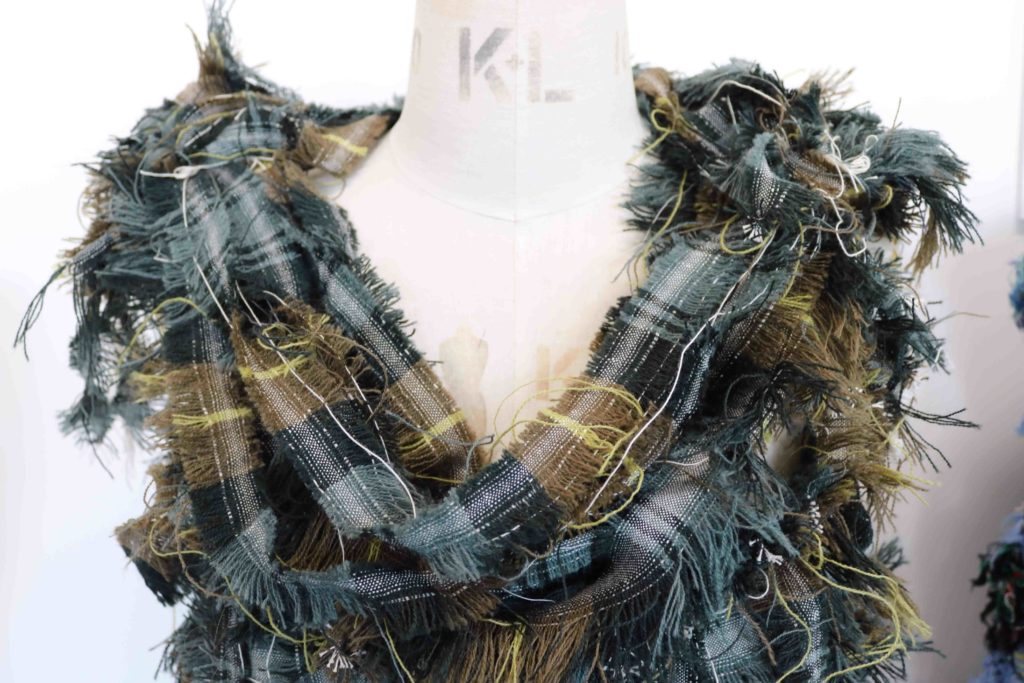
A close up of one of the garments made from material that was destined for landfill.
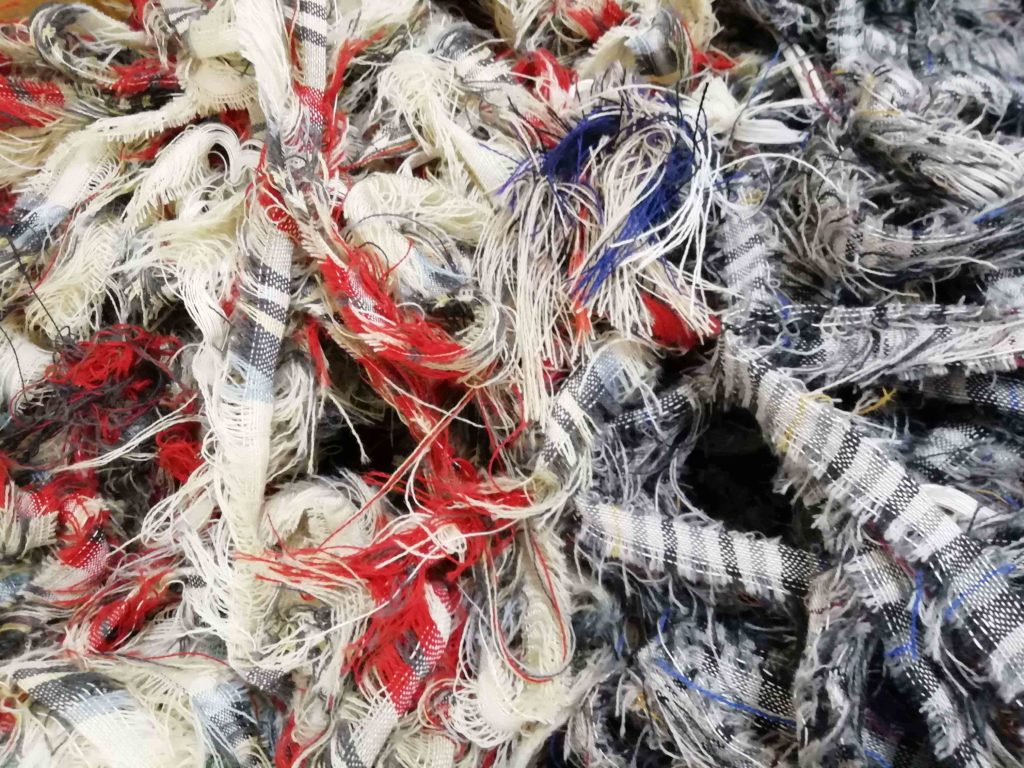
The waste fabric donated to the University.
The project comes at a time when the global fashion industry is coming under pressure to improve its record on sustainability. In 2017, UK Parliament set up an Environmental Audit Committee inquiry into the issue.
Fashion student, Amy White, created a full-length ‘space suit’ with the offcuts.
She said: “This was a completely new way of working for me, using waste materials. It meant that I had to contend with a limited amount of fabric, which was all of different types rather than a uniform batch, and I was restricted to a limited colour palette.
“It was also really time-consuming to produce the suit because I had to stitch row upon row of selvedge together, but I think the overall look is quite effective. And the main point is I have made something people can wear with material that would have otherwise gone to landfill.”
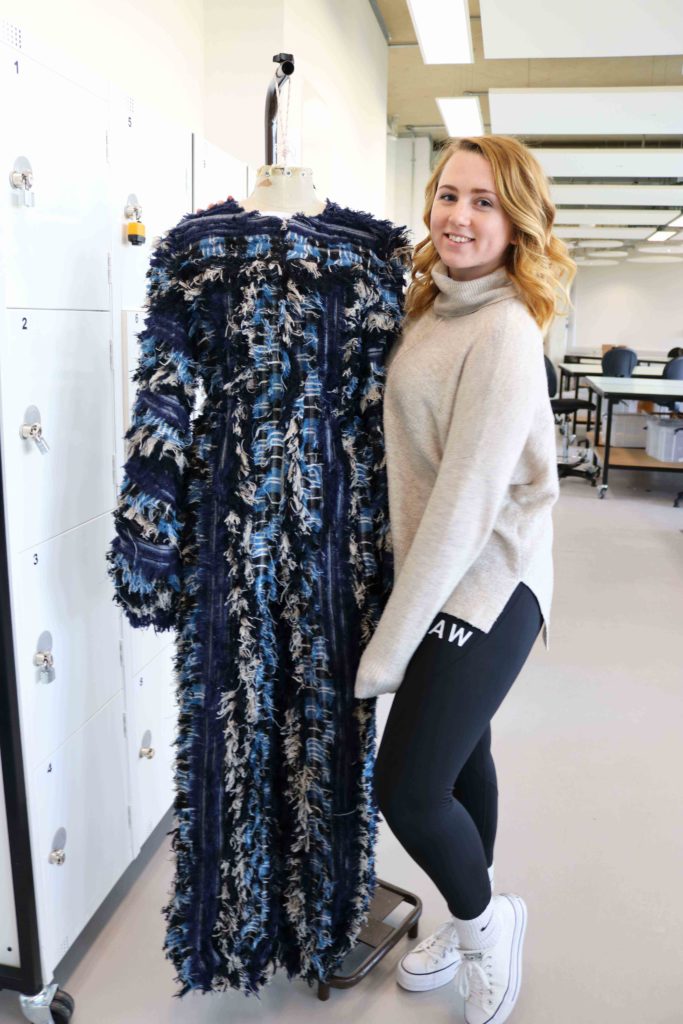
Amy White with her ‘space suit’.
Amy added: “Using waste offcuts isn’t suited for mass-produced clothing lines, but I think there’s definitely scope for individual designers to use them to create something that’s quite unique and sought-after.”
Anna Melegh, who studies Footwear & Accessories, produced a pair of gloves made from strands of cotton, which she knotted together by hand so they were of a usable length. She then knotted the lengths together which, at first glance looks like they have been knitted – but that’s not the case.
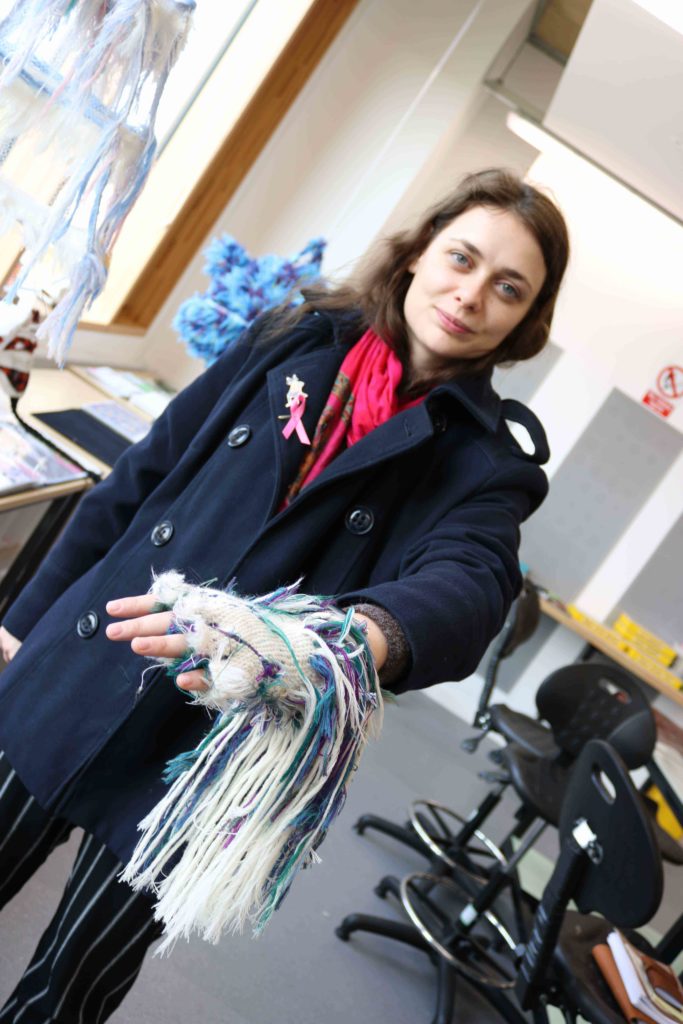
Anna Melegh shows off her glove.
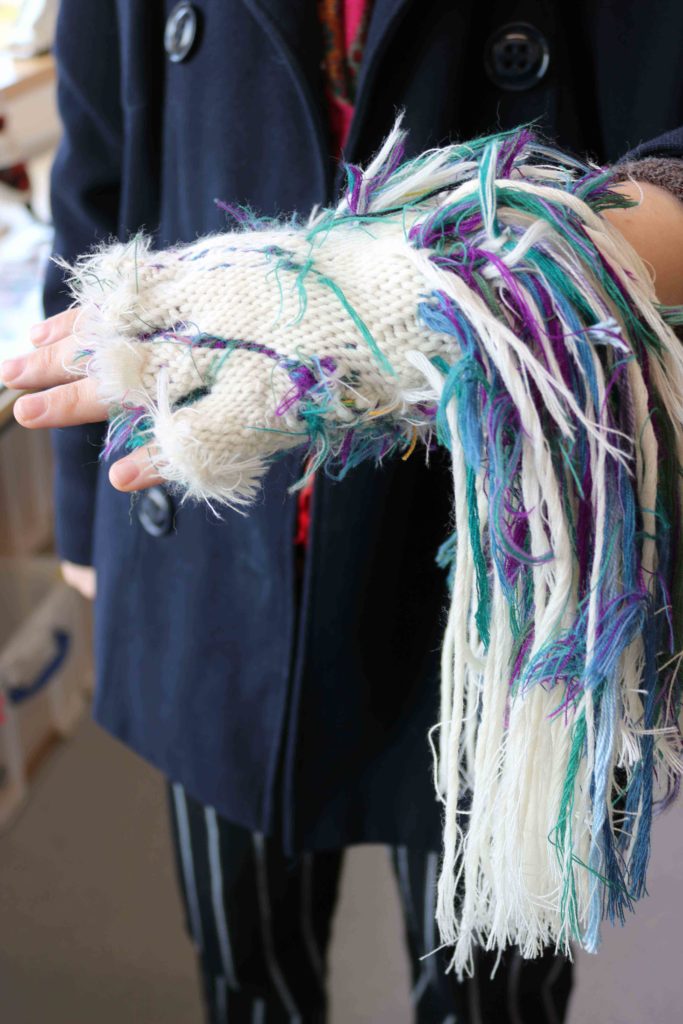
A close-up of Anna Melegh’s glove.
Anna said: “Last year I figured out how to make gloves, so I wanted to see if I could make some using the threads from the waste selvedge.
“It was a really interesting process, and it took some time to work out the right techniques. The gloves look like they are knitted, but in fact, I knotted them by hand. This was quite time-consuming and a lot of extra work, but it was satisfying and I’m very happy with the results.”
The collections have drawn praise from Margaret Bates, who is a global expert on waste. The Professor of Sustainable Wastes Management at the University of Northampton, said: “It’s really great to see how our students can buck the trend of fast fashion and design such beautiful alternatives to landfill. The level of commitment and imagination is truly inspiring.”
The University’s Fashion department has a growing reputation in the field of sustainability.
In June, Textiles for Fashion student, Radka Blazickova received national acclaim for her collection that was made entirely from plastic bottles.
In May, five Fashion undergraduates created a range of sustainable pieces, made from recycled materials, for a live industry project.
Meanwhile, Programme Leader, Emmeline Child, has carried out research on the circular economy which looks to address issues of pre-consumer waste in manufacturing facilities.
Emmeline said: “With a growing discourse around the circular economy and an increased understanding around fallout issues during linear garment manufacturing, projects like this bring greater awareness of some of the industry issues, while reducing the amount of virgin material in production.”